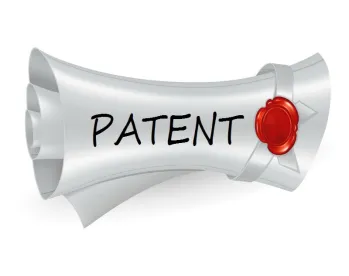Scientific information—features of an invention that are known through physical analysis—often provides the foundation for patent claims. But providing such information can also risk the validity of a patent if it is not clearly explained in the patent. Since the Supreme Court’s 2014 decision in Nautilus, Inc. v. Biosig Instruments, Inc. heightened the patent law indefiniteness standard, courts have been more rigorously looking to the claims, the specification, and the prosecution history (in that order) to determine if a patent “inform[s], with reasonable certainty,” persons skilled in the art about the scope of the invention.
Some recent decisions, however, appear to signal a trend toward lowering the Nautilus bar. For example, in One-e-way v. International Trade Commission, decided June 12, 2017, the Federal Circuit reversed the International Trade Commission’s finding that the phrase virtually free of interference was indefinite, relying heavily on a single sentence in the prosecution history as well as a favorable (for the patentee) interpretation of the specification. Other Federal Circuit cases, such as Akzo Nobel Coatings, Inc. v. Dow Chemical (2016) and Eli Lilly and Company v. Teva Parenteral Medicines (2017), appear to rely on context, alone, to salvage allegedly indefinite claims. While One-e-way arguably provides more reasons to find the claims definite than those decisions, the dissent may be onto something in its protest that the majority opinion runs “against the tide of the Supreme Court’s recent decision in Nautilus . . .” Taken together, these decisions have some specific implications for the use of scientific information in patents and, more generally, for the requirement that patents must contain claims “particularly pointing out and distinctly claiming” the invention.
By way of background, patent law requires patents to be clear and definite so potential infringers are reasonably apprised of the boundaries of the patented invention. However, unlike physical coordinates, which define real property boundaries, the words used to circumscribe an inventor’s conception of the invention are rarely so precise. The current law, based on the Supreme Court’s Nautilus decision, is that a claim is indefinite if it fails to inform “with reasonable certainty” those skilled in the art about the scope of the invention given what is disclosed in the patent application and what is said during examination, i.e., the prosecution history. Before Nautilus, a claim was indefinite only if it was not “amenable to construction” and was “insolubly ambiguous.” Under this old standard, a claim was definite so long as its meaning ultimately could be determined, even if that required substantial effort by the patent reader. The new test is more rigorous.
In Nautilus, the Supreme Court not only promulgated a new indefiniteness standard, but also remanded the case back to the Federal Circuit (Nautilus II, 2015) to reconsider whether the phrase in spaced relationship, when describing the electrode positioning in a heart-rate monitor, is indefinite. On remand, the Federal Circuit reaffirmed its earlier decision (Nautilus I, 2013) finding the phrase definite and, more generally, held that terms of degree are not inherently indefinite. Aligning its reasoning with the new law, the court looked to the claims, the specification, and the prosecution history. The court said that the claims themselves provided limitations on the spacing dimensions —insofar as the spacing could not be infinitesimally small nor could it be greater than the width of a hand given that the invention measured a heart-rate through a user’s hands. The specification shows a hand placed over the live and common electrodes so the hand is in physical and electrical contact with both electrodes. Further, the patent was allowed because of a whereby clause in the independent claim that required that the electrodes be in spaced relationship so “…the first and second electromyogram signals will be subtracted from each other to produce a substantially zero electromyogram signal at the output of said difference amplifier.” The relevant prosecution history discussion regarding this clause amounted to a test by which a skilled artisan could determine if the electrodes were in spaced relationship as claimed. As such, the Federal Circuit found that the phrase’s plain meaning, the specification, and the prosecution history all supported a definite interpretation.
In two cases following Nautilus II—Teva Pharmaceuticals, Inc. v. Sandoz, Inc. (2015) and Dow Chemical Comp. v. Nova Chemicals Corp. (2015)—the Federal Circuit invalidated two patents for indefiniteness because the claim terms were ambiguous and neither the specification nor the prosecution history added any clarity. In Teva, the court found the phrase molecular weight of about 5 to 9 kilodaltons in a claim to a process of making a co-polymer indefinite because there was no plaining meaning for molecular weight, which could refer to either peak average (Mp), number average (Mn), or weight average (Mw) molecular weight. The specification did not define molecular weight, and the prosecution history included inconsistent statements; the applicant asserted Mw in one instance and Mp in another. In Dow Chemical, the court found a claim to an ethylene polymer, which included the phrase slope of strain hardening coefficient greater than or equal to 1.3 indefinite because the phrase had no plain meaning and related to a relatively unknown measurement that the specification failed to teach how to measure.
While Teva and Dow Chemical are cautionary tales for inventors who rely on scientific terms to describe their patentable inventions, two additional post-Nautilus decisions offer hope when the claims, the specification, and the prosecution history are arguably insufficient to support a definiteness finding. In Akzo Nobel Coatings, Inc. v. Dow Chemical (2016), the Federal Circuit found the phrase an aqueous dispersion with a viscosity below 10 Pa.s. definite, absent a temperature recitation, because the court was convinced that, given the context of the patent, one would understand that room temperature was implied. In Eli Lilly and Company v. Teva Parenteral Medicines (2017), the court found the term vitamin B12 definite, even though vitamin B12 could refer to a class of compounds. In the context of administering a chemotherapeutic agent, vitamin B12 only refers to one compound. The contextual approach in these cases adds another arrow to the inventor’s quiver in combatting allegations of indefiniteness.
One-e-way also arguably gives additional ammunition to a patentee attempting to stave off indefiniteness challenges. In that case, the Federal Circuit found the phrase virtually free of interference, in a claim directed to a wireless digital audio system designed to let people use wireless headphones privately and without interference from other user’s wireless headphones, definite. The court agreed that the specification did not define “virtually free” or “interference,” and that the term, “interference” includes many different types. However, the court noted that the specification teaches that the invention allows private listening without interference from other user’s wireless audio transmission devices. The patentee also stated during prosecution that a cited prior art reference did not teach that “the interference is virtually eliminated (e.g., where eavesdropping cannot occur).” This characterization of the cited prior art reference, in combination with the eavesdropping discussion in the specification, was sufficient for the panel majority to hold the phrase definite. The dissent, however, disagreed, arguing that while the One-e-way patent identified “some standard” for measuring the scope of the phrase virtually free of interference, it did not identify a standard and therefore did not satisfy Nautilus for not clarifying “the degree of broadening attached to the word ‘virtually’” or providing “reasonable certainty about the objective boundaries of the disputed limitation.”
Despite the cases that appear to be walking back from the Nautilus definiteness standard, that formulation of what it means to provide definite claims should still be the guiding light for inventors and their patent attorneys. Thus, when claim terms lack plain meanings, or are open to interpretation, inventors should define the claim terms in the specification. When inventors design their own tests and describe their invention in their own terms, it is important that they expressly teach how to measure scientific terms recited in the claims. And when there are multiple ways to measure, they must provide guidance as to universe of possibilities that exist and the specific methods used in the instant case. Terms having plain meanings are preferred in claims whenever possible.




 />i
/>i

